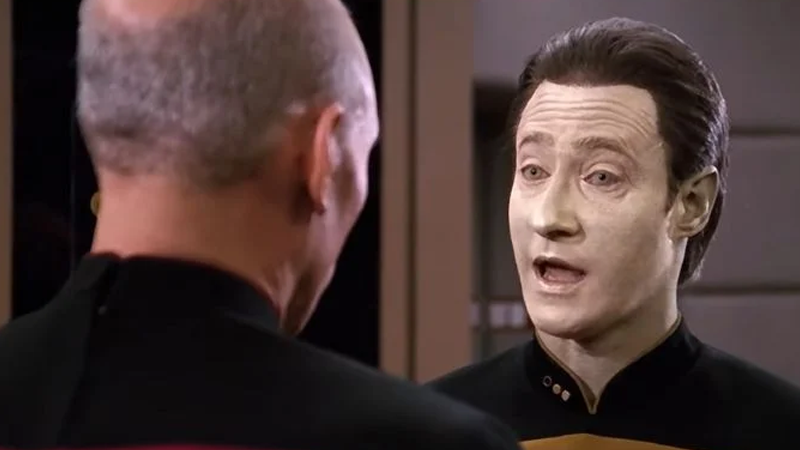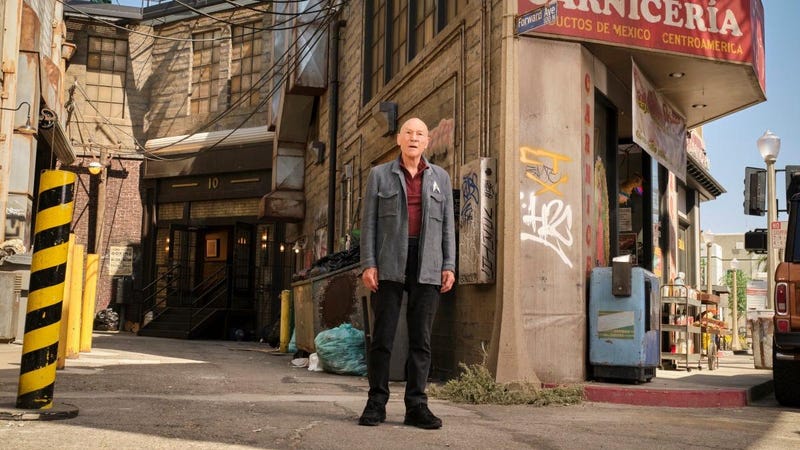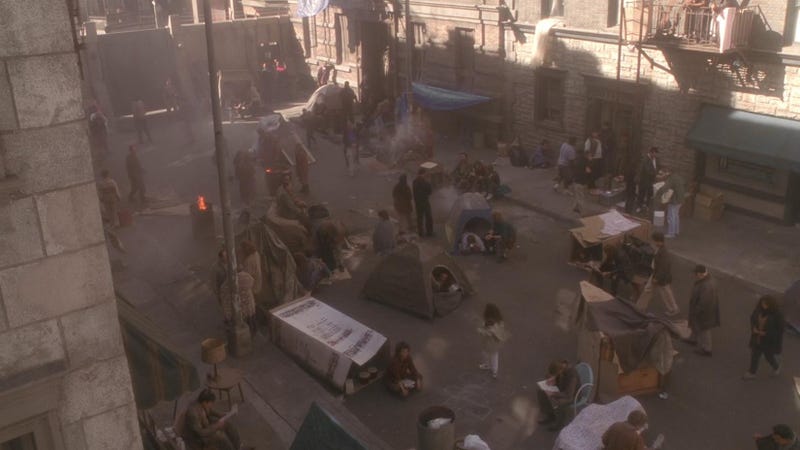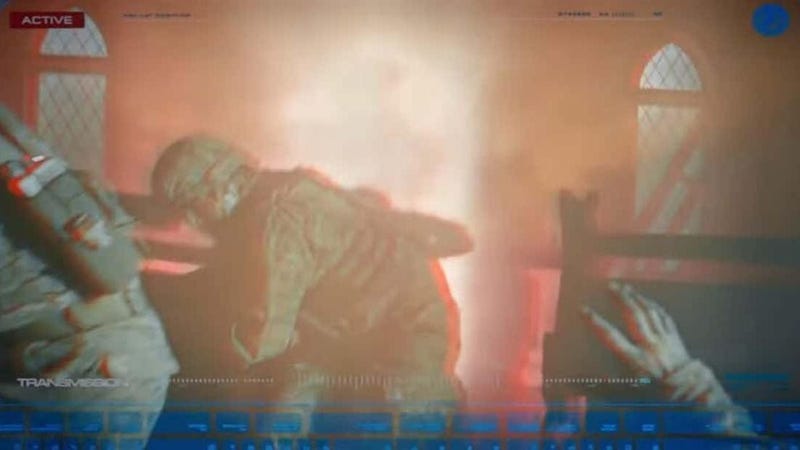The year 2024 is shaping up to be solid for Star Trek in our own reality—we’ve got the final season of Discovery, work is underway on Michelle Yeoh’s Section 31 film, and we’ve got the future of Strange New Worlds, Prodigy, and Lower Decks to look towards (and maybe even more?). But in Star Trek itself, this year is… well, it’s not great.
A lot—a lot—happens historically in Star Trek’s 2024, crucially important events that go on to not just shape Earth as it is in the early 21st century, but form foundational pillars for the contemporary Star Trek timeline. It’s a year we’ve heard about, and visited, multiple times across several Trek shows. So what’s exactly wild about it? Well, let us take a look through Trek’s past to find out… and perhaps, our future?
Irish Reunification

As mentioned by Data in TNG’s third season episode “The High Ground,” the Republic of Ireland and Northern Ireland bring an end to a century of violence and British influence to become a united nation in its own right in 2024.
We’re probably closer to the chance of Scottish independence happening sometime soon rather than that in our own timeline, but according to Data, reunification wasn’t just a step on the path to a more globalized Earth in terms of a planetary society, the event was a notable example of terrorism as a successful political instrument.
Global Political and Environmental Upheaval

Beyond Irish Reunification, 2024 in Trek history is defined by a series of political and environmental crises. In Europe, France is rocked by a series of civil protests and political battles between Neo-Trotskyists and Gaullists over how to deal with them, seen by the wider world as an indicator of Europe’s descent into turmoil.
Climate change also continues to rock the world this year, with America ravaged by wildfires, polluted air, and other forms of climate displacement that see it wracked with a homelessness crisis that eventually leads to the establishment of Sanctuary Districts, walled sectors of major cities designed to combat mass displacement and economic downturn, but only leading to… well, we’ll get to that later.
Pretty Much the Entirety of Star Trek: Picard Season 2

And you thought the global political and environmental upheaval was bad! I kid, I kid.
Almost all of Picard’s second season is set in 2024, as Q, attempting to help Jean-Luc reckon with the past of his family, sends the Admiral and his allies back to 2024 Los Angeles and mucks about with the timeline and Jean-Luc’s great-great-cousin, Renée Picard. Renée was a mission specialist on an interplanetary mission launched in 2024 called the Europa Expedition, an alliance between the United States and multiple world nations to send a shuttle to Europa, one of Jupiter’s moons.
During the mission Renée discovers a sentient microorganism on the moon Io, and brings it back to Earth for study—setting the stage for vital research that would radically combat climate change, avoiding humanity’s impending extinction.
The Bell Riots

Extinction avoided is nice, but that doesn’t stop other bad things existing in Trek’s 2024. Remember those Sanctuary Districts we mentioned earlier? They begin cropping up in major cities all over the United States, intended to provide free housing, healthcare, and job opportunities to people impacted by the wave of economic, climate, and political crises wracking the country. But Sanctuary Districts rapidly descended into totalitarian ghettos, with local police forces ruling the districts with iron fists, and local governments using the sanctuaries to corral poor civilians away from the upper classes, largely unaware of just how brutal the districts had become.
As depicted in the Deep Space Nine two-parter “Past Tense,” in the late summer of 2024 in San Francisco’s Sanctuary District A, a group of residents lead by Graham Bell staged a violent takeover of the district’s processing center, taking several federal employees and police officers hostage. The hostage situation was nearly diffused peacefully on Bell’s part (who was, in fact, Captain Benjamin Sisko, who created a paradox after a transporter accident led to him and several of his officers being sent back to 2024 and inadvertently causing the death of the real Graham Bell), with the plight of the Sanctuary Districts being broadcast across the U.S..
But the Governor of California ordered a violent crackdown on District A by the National Guard, leading to the massacre of hundreds of residents being broadcast as well. The Bell Riots, as they would come to be known, sparked a wave of public action against Sanctuary Districts—leading to campaigns for mass socioeconomic reform to replace the need for the districts.
The Advent of World War III

Okay so this doesn’t actually happen in 2024, but it’s important to note after last couple of events—turning points in human history for the better, without which a United Earth and the concept of Starfleet and eventually the Federation wouldn’t have existed—that things don’t immediately start improving. In fact, they get much, much worse: World War III breaks out two years later in 2026.
Continuing global unrest sees the United States enter thermonuclear war with a pan-nation alliance known as the Eastern Coalition. Lasting into the early 2050s, World War III sees the death of six hundred million million people, the eradication of almost every major city on Earth, and the complete destruction or dissolution of many national governments. Society as most of Earth had known it for hundreds of years collapsed entirely, and if not for the arrival of a group of Vulcans in 2063 to kickstart humanity’s ascent to the interstellar sphere, it likely would’ve stayed that way as the remnants of the species navigated the fallout of the post-apocalypse.
But Hey, the Baseball’s Pretty Good?

So the global thermonuclear war, ravages of climate change, and economic and political turmoil are all pretty bad. But baseball in 2024? Never been better.
A hilariously obscure factoid from Captain Sisko’s love of the ancient game, we learn in background ephemera from Deep Space Nine that 2024 is the year Harmon “Buck” Bokai, considered one of the greatest players of the game in human history, becomes the first solar system-wide batting champion while playing for Seibu in, presumably, Japan’s Nippon Professional Baseball league, before moving to the London Kings in 2025. Just how an Earth still in the nascent stages of interplanetary exploration has a solar system-wide professional sports body has never been explained—there was at least, eventually, a Planetary Baseball League on Earth—but good for him!
Bokai would continue to play baseball for a variety of teams for the next two decades, when the professional livelihood of the sport came to an end in 2042 with the final World Series. Don’t ask how they kept playing professional baseball during the near-total-devastation of Earth, either.
Want more entertainment news? Check out when to expect the latest Marvel, Star Wars, and DC releases, what’s coming to cinemas in Australia this year, and everything streaming this month across all platforms. Check out our dedicated Entertainment tab for more.
